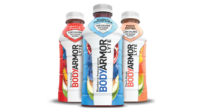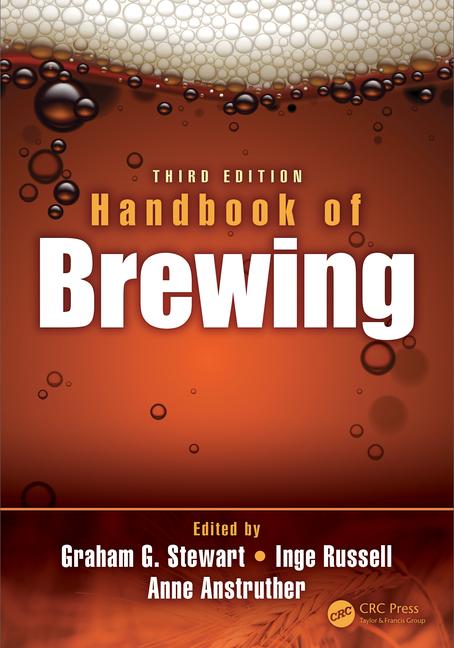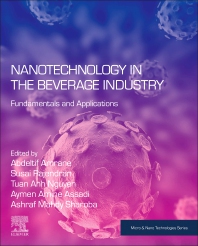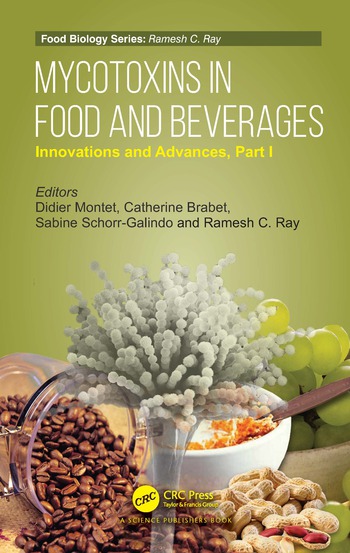Protein flexes its muscles as consumers look to add more protein to diet
Higher protein content proliferates beverage development

Image courtesy of Pressed Juicery
Known for her international chart-topping songs, including “Turn the Beat Around” and “Rhythm Is Gonna Get You,” Cuban-American singer and eight-time Grammy-Award winner Gloria Estefan is quoted for saying, “You know, it’s funny how songs continue to grow and evolve and become a new and deeper reflection of your life.”
In a similar fashion, consumers’ perception of protein continues to evolve with the use of protein-fortified drinks extending beyond traditional sports occasions.
“The increasing consumer focus on health and wellness is a key driver behind the interest in protein-fortified beverages,” says André Tomazelli Sabará, sales director at Concepta Ingredients, Valinhos, Brazil. “People are more aware of the importance of protein in maintaining muscle mass, boosting immune health and promoting satiety.”
Bret Barhoover, category marketing manager for specialized nutrition at Cargill, Minneapolis, echoes similar sentiments, noting that consumers are taking a more holistic, proactive, preventative and personal approach to health.
“Our ClaimTracker consumer research finds that within the health/nutrition beverages and powders segments, a ‘good source of protein’ is the on-pack claim with highest impact on purchase decisions,” Barhoover says. “As a standalone claim, it reaches roughly two-thirds of consumers, and nearly the same percentage report a willingness to pay 10% more for a beverage or powder carrying a protein claim.”
Janae Kuc, manager of beverages and nutritionals category marketing at Ingredion Inc., Westchester, Ill., also points to how consumers are linking protein to a wide range of benefits.
“These products are now expected to support functionality for a range of daily activities, not just the intense workout,” she says. “According to the Hartman Group, 83% of consumers want to improve their weight and see food and beverages as their primary tool.
“We are also seeing the growth in adult-targeted drinks at a broader age range,” Kuc continues. “These products focus on shoring up nutrition but are expanding out beyond clinical nutrition consumers.”

Niki Kennedy, director of insights and content at Chicago-based Glanbia Nutritionals, notes that, with rising consumer interest in protein intake, protein fortification has extended to beverage categories including coffee, tea, energy drinks and more.
“In the United States over half (56%) of consumers are trying to increase their protein intake, and more than one in three use protein-fortified foods and beverages to ensure their protein intake,” Kennedy says. “Across food and beverage categories, consumers see protein as a signpost for health.
“Protein-fortified snacks, including beverages, have relevance beyond the gym, with 22% of U.S. protein snack consumers using these products during a work or study break, and 41% while watching TV or playing video games,” she continues. “Additional protein beverage categories include drinking yogurts, which are particularly popular in Asia, and protein-fortified active lifestyle drinks like Core Power and Fairlife.”
In demand
As the protein trend continues to expand, experts highlight some of the requests received from beverage-makers looking to incorporate protein into new products.
In the beverage space, 20 grams of protein is now a common threshold, with some customers aiming for 30 or even 40 grams of protein in a single serving. At the same time, we continue to see steady interest in plant proteins.
Melissa Machen, principal technical account manager of protein ingredients at Cargill, pinpoints two key themes as it relates to protein in beverages: higher inclusion levels and more plant-based formulation.
“In the beverage space, 20 grams of protein is now a common threshold, with some customers aiming for 30 or even 40 grams of protein in a single serving,” Machen says. “At the same time, we continue to see steady interest in plant proteins.
“Not so long ago, those would have represented two divergent ideas, but improvements in plant proteins — especially as it relates to solubility and flavor — are making it possible for us to accommodate both asks,” she continues.
Tara Kozlowich, director of global segment marketing and healthful solutions and protein fortification at Ingredion Inc., explains that, aside from the high protein content, beverage-makers’ primary focus is around taste and texture.
“These are big non-negotiables for consumers and any compromise in these areas can significantly impact the product’s success in the market,” she says. “Plant proteins can often impart some undesirable beany or vegetal off-notes and can be chalky or powdery texture-wise. Therefore, beverage- makers want to make sure that the protein they’re using has a superior sensory profile.”
Concepta’s Tomazelli Sabará, meanwhile, notes that beverage-makers are requesting protein ingredients that offer high nutritional value without compromising taste or texture.
“There is a strong demand for versatile plant-based proteins that are free from gluten, soy and GMOs, and that blend well into formulations,” he says. “This aligns with the request for ingredients that can enrich beverages with a smooth texture and no aftertaste, such as the Arboreto Premium Protein PRO 1000GB, which offers a rich protein profile and is derived from sesame and babaçu.”
QiQi Peng, manager of applications cheese and ingredients at Hilmar Ingredients, Hilmar, Calif., highlights the rising request for protein-fortified beverages in a ready-to-drink (RTD) format.
“Beverage-makers are looking for whey protein that has clarity and low viscosity in the finished product,” she says. “That is a product different from the traditional creamy mouthfeel RTD beverage. Besides the nutritional values from whey proteins, the clear whey protein RTD offers a lighter mouthfeel, clear physical appearance and a more refreshing consumer experience.”
What to consider
When it comes to formulations, experts note that protein blends require balancing several factors including taste, texture, solubility and stability.
“When developing RTD beverages, solubility and heat stability are two main characteristics,” Hilmar’s Peng says. “Whey protein is a perfect choice because it has excellent solubility and heat stability across the pH ranges.
“Hilmar 9020 is an excellent choice for producing clear, whey protein beverages,” she continues. “It has great solubility and heat stability, and in low pH conditions, the solution is clear.”
Glanbia’s Kennedy explains why ingredient choice is critical in RTD formulations.

“Dairy protein is an important ingredient here since 53% of U.S. consumers prefer milk or whey protein as the protein source in their fortified protein products,” she says. “In addition, protein drink users cited the most appealing flavors as chocolate (64%), vanilla (52%), strawberry (44%), cookies and cream (33%), peanut butter chocolate (32%), and mixed berry (31%), with great tasting as the most important attribute in a protein RTD.”
Cargill’s Machen, meanwhile, notes that processing requirements are another consideration in the RTD beverage space.
“At higher inclusion levels (20-plus grams of protein per serving), some plant proteins may clog ultra-high temperature (UHT) machines,” she says. “Maintaining mouthfeel over shelf life is another concern as some plant proteins may cause high-protein beverages to become more viscous over time, yielding a final product that’s more akin to pudding than a drink.”
Machen adds that, while taste remains the top priority, proteins are prone to off-flavors — especially when used at high inclusion rates.
“... It’s incumbent on formulators to search for options with the best flavor profile. However, especially at higher inclusion levels, unwanted elements like bitterness, astringency and earthy undertones may need to be addressed,” Machen says. “To compensate, brands often turn to a class of ingredients known as flavor maskers.
“The key is finding masking solutions that provide a neutral profile and work in harmony with — or even enhance — the finished product’s planned flavor profile,” she continues. “Our most advanced sweetening system, EverSweet stevia sweetener + ClearFlo natural flavor, does just that — supporting reduced- or no-sugar-added formulations, while also offering flavor-modifying properties.”
Further, Machen notes how high protein beverages need the right stabilizer.
“Both animal and plant proteins tend to thicken and gel over shelf life, creating off-putting textures and mouthfeels,” she explains. “In these situations, adding hydrocolloids like carrageenan or gellan gum can help stabilize proteins and maintain viscosity.”
With more alternative proteins emerging on the scene, experts highlight what to consider when working with plant-based proteins.
“Selecting the right protein source starts with understanding the end application and the product development goals, taking into account things like color, flavor profile, preferred mouthfeel and targeted protein inclusion level and/or related protein claims,” says Melissa Machen, principal technical account manager of protein ingredients at Cargill. “All botanical proteins aren’t created equal — they have different solubilities, flavor profiles and other sensory and functional attributes.”
Machen adds that, although plant proteins historically have struggled to deliver a whey-like sensory experience, advances in processing technology have allowed for huge gains against sensory challenges.
Addressing taste and mouthfeel relative to pea-based options, Machen points to Cargill’s PURIS 2.0 as helping drive growth of plant-based products within the ready-to-drink category.
“Another feature of PURIS 2.0 is its ability to add higher protein levels into a beverage, while delivering a drinkable viscosity. At higher inclusion levels, most pea proteins create a shake-like viscosity that’s far too thick for a drinkable beverage,” she says. “PURIS 2.0 also delivers noticeable improvements to mouthfeel, enhancing creaminess while reducing the chalkiness often present with other pea proteins.”
Tara Kozlowich, director of global segment marketing and healthful solutions and protein fortification at Ingredion Inc., points to the importance of understanding a formulations’ nutritional profile when formulating with pea protein.
“When formulating with pea protein, several key considerations can enhance product development,” she says. “First, you must understand its nutritional profile, which includes amino acid profiles and protein. Pea protein offers a good balance of essential amino acids, but may require blending with other proteins to achieve a complete amino acid profile.”
Kozlowich also notes that taste and texture are important factors to consider as they are critical to consumer acceptance.
“Ingredion’s VITESSENCE Pea 100 HD is a specialized pea protein designed to enhance the texture and taste of cold-pressed bars,” she says. “This protein helps maintain the softness of bars throughout their shelf life, addressing common issues like hardening and chalkiness that can occur with other protein sources. Additionally, it offers a smooth texture and neutral taste, making it a versatile ingredient for various formulations.”
André Tomazelli Sabará, sales director at Concepta Ingredients, notes that, when formulating with plant-based proteins, such as pea, soy and rice, compatibility with other ingredients is crucial as some proteins may require careful adjustments to achieve the desired consistency and functionality in the final product.
“However, sesame protein distinguishes itself from these other plant proteins with several unique advantages,” Tomazelli Sabará says. “Sesame protein boasts a naturally rich amino acid profile, which enhances its nutritional value and makes it an attractive option for formulating high-protein, plant-based products. Moreover, its functional properties contribute to the simplification of clean-label formulations, as it reduces the need for excessive additives or flavor-masking agents.”
Innovations for the future
As beverage-makers continue to unveil new protein innovations, experts anticipate what the future holds for protein-fortified drinks.
“Retail indications reflect strong momentum in the protein RTD category, which has demonstrated robust growth with more than 15% rise in buyers, alongside increases in purchase frequency and purchase size,” Glanbia’s Kennedy says. “The category appears to be bringing in more buyers compared to a year ago, as well as a shift to multi-packs indicating that consumers are embracing these products into their routines.
“And the positive performance of protein RTDs is primarily attributed to the growth of dairy proteins, which hold the majority share of the category,” she continues.
Cargill’s Barhoover says his eyes are on “clear” protein, one of the newer protein innovations on the market.
“In simple terms, it’s a drink like water, not a shake,” he explains. “It’s a challenging idea for most plant proteins today ― but perhaps in the not so distant future we’ll have plant-based options that support clear formulations.
“I’m also watching the ‘protein+’ space,” Barhoover continues. “Consumers are looking for products with increasingly more active ingredients with health propositions. Whether that’s aimed at mood, sleep, digestive health or other benefits, there’s certainly an appetite for beverages that do more.”
Ingredion’s Kuc points to a recent consumer study Ingredion commissioned on the beverage landscape, with five health-focused benefit areas important to consumers.
“These areas include energy/performance, natural/sustainable, mental health benefits, general health and wellness as well as weight management. These benefit areas tie to consumer need states, for example, energy/performance ties to the consumer need for boosting and sustaining their energy— throughout the day or during exercise,” Kuc says. “Consumer driven need states will continue to shape the demand for protein in the beverage space.
“Digestive health and immunity are also on the rise and score similarly to natural/sustainable and weight management benefit areas,” she continues. “The interest in GLP-1 drugs is going to be something to watch for as people taking the drug may be eating less but searching for nutrient dense options such as protein beverages to help shore up their nutritional needs.”
Looking further out, Cargill’s Barhoover expects that advances such as precision fermentation will influence product development, opening up new application spaces previously not accessible with traditional proteins.
“This technology has the potential to offer a range of benefits, spanning nutritional considerations, sensory expectations and sustainability considerations,” he concludes.
Looking for a reprint of this article?
From high-res PDFs to custom plaques, order your copy today!









